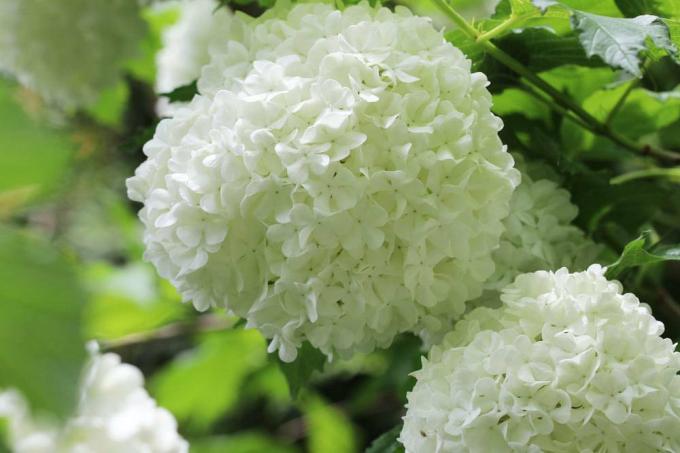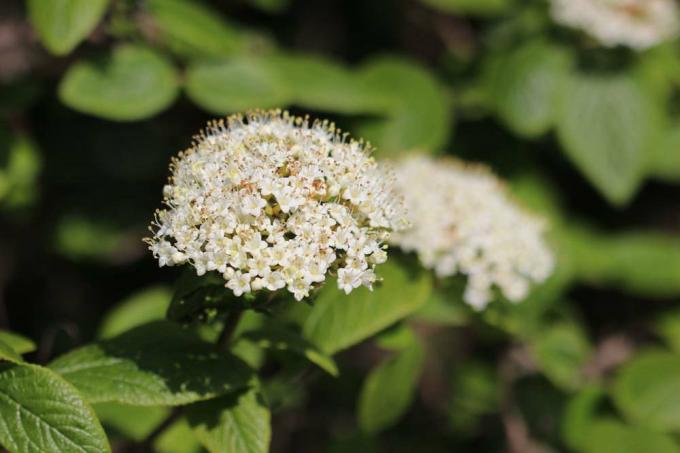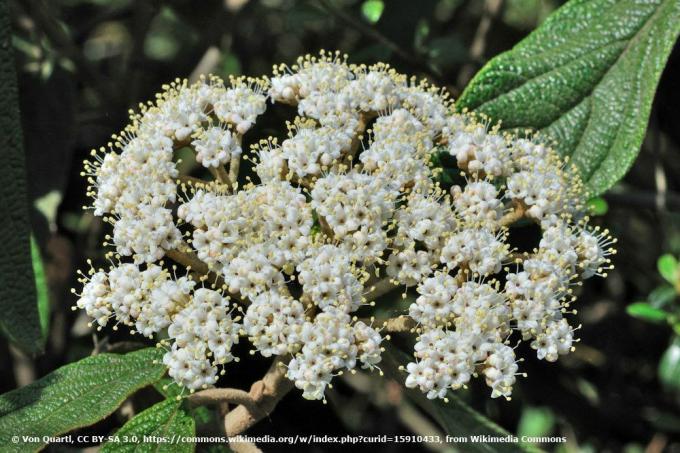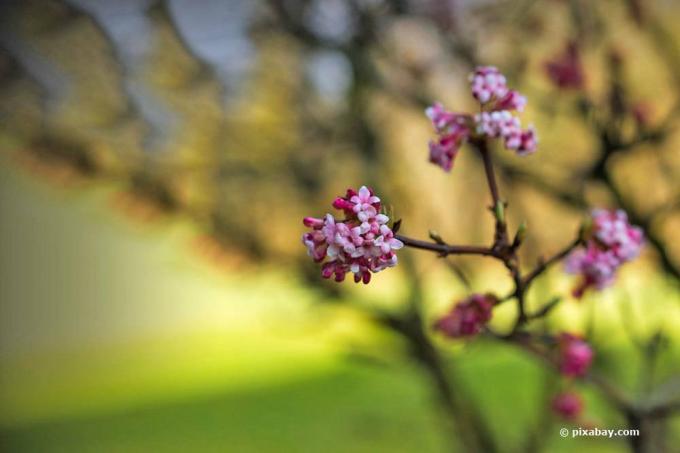
table of contents
- When does viburnum bloom?
- Flowering times by species
- Ordinary snowball
- Woolly snowball
- Japanese snowball
- Evergreen pillow snowball
- Easter snowball
- Wrinkled viburnum
- Fragrant snowball
- Laurel snowball
- Bodnant winter snowball
- Winter scented snowball
Viburnum, also known as snowballs, are one of the Germans' most popular ornamental plants due to their shape and numerous species. Many owners are eagerly awaiting the bloom, the duration of which can last for several months and always cause delight in their own green oasis. When did the musk herbaceous plant (bot. Adoxaceae) blooms, but is not known to everyone. Since the individual taxa present their bloom at different times, a direct comparison is particularly interesting.
When does viburnum bloom?
The flowering time of the snowball species differs greatly from one another. The reason for this are the original distribution areas. Of the ten typical species grown here, only the common and woolly snowball are native to Central Europe. However, all taxa can be divided into two rough flowering times:
- Early spring - late summer
- Late autumn - winter
However, these provide little information about the actual duration of the individual taxa. Snowballs, however, belong to the genera that, with good care, can bloom for several months. This is exactly the reason why the plants are so popular. If you want to know when a particular species will bloom, check out the list below:
Flowering times by species
Ordinary snowball
(bot. Viburnum opulus)
The ordinary is the classic among the snowballs and can be found in its wild form everywhere in Germany. The flowering period of this species ranges from Early May to late August and immediately after flowering the plant goes into fruit ripening. The fruits are berries that birds like to eat from the end of November, which makes the species popular as a bird hedge.
Woolly snowball
(bot. Viburnum lantana)
Viburnum lantana is the only other type of snowball that can be found wild in Central Europe. The flowering of the species shows up from April to June in panicles and doesn't really smell pleasant. For this reason, the plant is not so popular in the garden.
Japanese snowball
(bot. Viburnum plicatum)
With this species, you have to pay attention to the individual variety, because not all of these bloom the same length. 'Summer Snowflake' shows the flowers of May to September, while 'Mariesii' only from May to June blooms. In any case, the Japanese variety will begin to bloom from May.
Evergreen pillow snowball
(bot. Viburnum davidii)
The evergreen pillow snowball is a species that blooms very briefly compared to the others. Despite the evergreen foliage, the flowers only show up above the June.
Easter snowball
(bot. Viburnum burkwoodii)
With the Easter snowball, as the name suggests, you bet on a snowball that blooms in spring. The flowers usually open in the second week of April and rich until mid-May and with very good care until June. That makes them ideal as a spring snowball.
Wrinkled viburnum
(bot. Viburnum rhytidophyllum)
This Chinese species also shows its flowers in spring early in the year. from April to May the bloom of the wrinkled snowball presents itself in full splendor and then the entire focus is directed to the leaves.
Fragrant snowball
(bot. Viburnum odoratissimum)
Yes, the fragrant viburnum with its sweet scent of flowers in the spring of April to June in for ecstatic noses. This taxon is one of the smallest of the genus and reaches a maximum height of 180 cm, but the flowers consistently inspire during spring.
Laurel snowball
(bot. Viburnum tinus)
With the Laurel snowball there is one of the most famous types of winter snowballs, which originally comes from the Mediterranean and can even be found in England. Their flowering inspires over a long period of time early November to late April in and then provides opaque green over the summer. The species is poorly hardy and prefers mild winters.
Bodnant winter snowball
(bot. Viburnum bodnantense)
Another type of winter snowball, also made by November to April presents their flowers. This species is extremely popular as a winter ornamental plant because it loses its foliage and the flowers stand alone in white on the branches. This gives them a unique look that immediately attracts everyone's attention.
Winter scented snowball
(bot. Viburnum farreri)
The last of the bunch is the winter scented viburnum, whose numerous flowers smell and bloom throughout the winter. The flowering period is enough for this type of End of October or beginning of November until April in and thus joins the division of winter snowballs.

As you can see, with the right planning and sufficient space in the garden or on the terrace, you can easily enjoy the snowballs all year round. For example, you can use a combination of the ordinary, laurel- and use the scented snowball to never miss out on the numerous flowers. However, you should then make sure that hardy To choose varieties that have no problem with the cool German winters.
tip: The flowering time of the snowballs can be extended significantly if you have planted your specimens in a protected location. If the plants have enough sun, you can look forward to lavishly blooming snowballs, which will charm you with their flowers for a long time.












